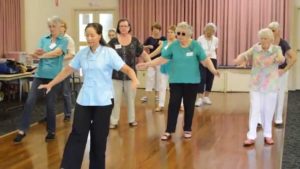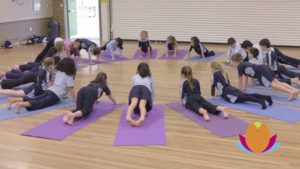
By John M. de Castro, Ph.D.
“Making office yoga exercises a part of your routine can work wonders as they wipe away body pain, fatigue and tension and increase overall muscle strength and flexibility, keeping you fresh and revitalized through the day.” – The Art of Living
Sometimes in the workplace employees engage in behaviors that harm the organization or other employees. These are known as counterproductive work behavior and include behaviors such as absenteeism, bullying, abuse of others, excessive use of social media, incivility, aggression, chronic lateness, sabotage, harassment, substance abuse, and theft. These behaviors are quite common as 75% of employees have reportedly stolen from their employer and 33% to 75% of all employees have engaged in fraud, sabotage, and voluntary absenteeism. In addition, it has been estimated that around 40% of employees have been bullied in the workplace. Such behaviors can cost organizations dearly. It has been estimated that in the U.S. workplace violence costs around $4.2 billion, theft costs around $80, and delinquent behavior costs around $100 billion annually. Hence, it is important to organizations to find methods to reduce or control these counterproductive work behaviors.
Mindfulness practices have been shown to be effective in promoting the work performance and the well-being of workers including the prevention and treatment of burnout. Yoga is a mindfulness practice that has been shown to have a wide range of physical and psychological benefits. It has also been used to promote health in the workplace. In today’s Research News article “Effect of yoga practices in reducing counterproductive work behavior and its predictors.” See:
or see summary below or view the full text of the study at:
http://www.ncbi.nlm.nih.gov/pmc/articles/PMC4919969/
Dwivedi and colleagues investigate whether yoga practice can reduce counterproductive work behavior. They recruited working professionals who had engaged in counterproductive work behavior and randomly assigned them to a yoga practice group or a control condition which included lectures on management and mild to moderate exercise. Both groups practiced for one hour per day, five days per week, for ten weeks. The participants were measured prior to and after the training for counterproductive work behaviors, aggression, and positive and negative emotions.
They found that after the ten-week practice the yoga practice group, but not the control group, had significant reductions of 15% in counterproductive work behaviors, 14% in aggression, and 22% in negative emotions. These are very good results and suggest that yoga practice can improve the psychological state of workers and reduce counterproductive work behaviors. This suggests that yoga practice may be of great use in organizations and improve employee behavior and the costs of wasteful counterproductive work behaviors.
It will be important to establish whether these effects are lasting with follow-up measurements. Regardless, the results suggest that yoga practice is a safe and effective method to improve employee health and reduce the negative behaviors that interfere with organizational effectiveness and add unnecessary costs.
So, reduce aggression and counterproductive work in the office with yoga.
“Taking breaks in the workday with yoga has proven to be one of the most effective ways in helping employees relieve stress and become refreshed and more focused. Employees will then be able to make better decisions, be more productive, and have a more positive attitude with co-workers.” – Kreg Weiss
CMCS – Center for Mindfulness and Contemplative Studies
This and other Contemplative Studies posts are also available on Google+ https://plus.google.com/106784388191201299496/posts
Study Summary
Dwivedi, U., Kumari, S., & Nagendra, H. R. (2016). Effect of yoga practices in reducing counterproductive work behavior and its predictors. Indian Journal of Psychiatry, 58(2), 216–219. http://doi.org/10.4103/0019-5545.183778
Abstract
Context: Aggression and negative affectivity (NA) are known for moderating relationship between job stressors and counterproductive work behavior. Yoga has been demonstrated earlier to reduce the parameters of aggression and negative emotions.
Aim: The present study examined the effectiveness of yoga practices in reducing counterproductive work behavior and its predictors such as aggression and NA.
Settings and Design: A pretest–posttest randomized controlled design.
Materials and Methods: The study sample included yoga group (n = 80) and control group (n = 80). Yoga module that included asanas, pranayama, meditation, and yogic theory were taught to the yoga group. Mild to moderate physical exercises and management theories were taught to the control group. Both groups received intervention for 10 weeks, covering 1 h daily, 5 days a week. Measurements of self-reported counterproductive work behaviors, aggression, and NA were taken as baseline and postintervention for assessment.
Results: Yoga group reported significant reductions in aggression, NA, and counterproductive work behavior in comparison with the control group after 10 weeks.
Conclusions: This study contributes by introducing a cost-effective way to prevent the heavy losses organizations are incurring due to counterproductive work behavior and its predictors. The findings support that yoga at workplace may result in positive psychological empowerment of the employees as well.
http://www.ncbi.nlm.nih.gov/pmc/articles/PMC4919969/








